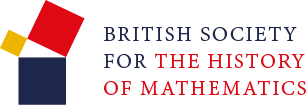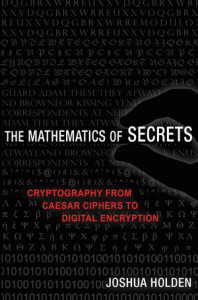
Since some people might be looking for small momentary diversions around now to take their mind off things, we’re running a little poetry competition!

Since some people might be looking for small momentary diversions around now to take their mind off things, we’re running a little poetry competition!

Two competitions have been announced by the British Society for the History of Mathematics.
The schools competition invites participants to “make a case for the most important/your favourite mathematician in the history of mathematics” by either writing an article or producing a video or multi-media project.
This competition is your chance to explore how mathematics has developed and achieved its status and who were the most important mathematicians in history who contributed to it. This year we would like you to concentrate on choosing one mathematician who has, in your opinion, been the most important person, your favourite, and to make the case for it – to explain his/her mathematics and to show their importance or what you think was special about it and them.
This is run with Plus Magazine and there are two categories for ages 11-15 and 16-19. The deadline for entries is 1st September 2019. Guidance, rules, etc. via BSHM Schools Plus Competition.
The Undergraduate Essay Competition invites essays on any topic in history of mathematics of no more than 2500 words in length and is open to people enrolled as undergraduates in UK and Irish universities in academic year 2018/19. The deadline is 21st June 2019. Guidance, rules, etc. via BSHM Undergraduate Essay Prize.

It’s that time of year again – 3.14 (March 14th), a.k.a π day, is just around the corner, and if you want to do something fun on the day, now’s the time to plan it. One nice way to celebrate this brilliant infinite string of digits is by creating π-inspired art, and we’ve spotted a couple of relevant links if that’s your jam.
The Alan Turing Cryptography Competition, now in its 7th year, is an online competition run by the University of Manchester School of Mathematics, for school students up to year 11 or equivalent. Cryptographic puzzles are released every couple of weeks and teams of up to four compete to solve the puzzles, with prizes for the fastest and other randomly selected correct entries. Registrations are open now, and the competition starts on 28th January 2019.
For sixth form pupils, there is also MathsBombe – an online competition, with two mathematical puzzles released every fortnight. The puzzles are not directly related to the A-Level syllabus but will require students to use their problem-solving skills.
 Ten days ago we posted a cryptogram puzzle, set by mathematician and author Josh Holden. We’ve had a number of entries, some which were so enthusiastic they ignored that we’d said to email them in and tried to post in the comments. However, from the correctly submitted entries, we had one stand-out winner – a quick reply, with a detailed description of the solution and a worthy recipient of a copy of The Mathematics of Secrets. Here’s Josh’s explanation of the puzzle, for anyone who hasn’t cracked it yet.
Ten days ago we posted a cryptogram puzzle, set by mathematician and author Josh Holden. We’ve had a number of entries, some which were so enthusiastic they ignored that we’d said to email them in and tried to post in the comments. However, from the correctly submitted entries, we had one stand-out winner – a quick reply, with a detailed description of the solution and a worthy recipient of a copy of The Mathematics of Secrets. Here’s Josh’s explanation of the puzzle, for anyone who hasn’t cracked it yet.
 Author and mathematician Josh Holden has come up with a nice puzzle — so we’re posting it as a competition. If you think you can decrypt the message below, send in the decrypted message and a one- or two-sentence description of the mathematical principle behind the encryption key to root@aperiodical.com. The first correct entry received will win a copy of Josh’s book, The Mathematics of Secrets.
Author and mathematician Josh Holden has come up with a nice puzzle — so we’re posting it as a competition. If you think you can decrypt the message below, send in the decrypted message and a one- or two-sentence description of the mathematical principle behind the encryption key to root@aperiodical.com. The first correct entry received will win a copy of Josh’s book, The Mathematics of Secrets.
The technical name for the “cryptograms” found in many newspapers and magazines is monoalphabetic monographic substitution ciphers — monographic meaning that they make substitutions one letter at a time and monoalphabetic meaning that the substitution rule is the same every time a given letter appears in the message.
Most often the easiest way to start solving these is to look at one-letter words which are usually “I” or “a”, then two-letter words, etc. If the breaks between the words are removed, then you might use the fact that in a typical English text the letter “e” will occur about 13% of the time, followed by “t” and “a” at 7-8% and others farther behind.
What then should we make of the following cryptogram?
YOFQX RGLQT GCQPB FFGQJ IQOFT SYVQH FSFQV FTYFC QJGQY OFRSQ YOSJG FQHOF GQYOF NQTSS REFCQ HRYOQ TQLSF TYQZS JHCQT VVFDW AFCQT WJBYQ YOFDQ TAAQV JSYVQ JIQAR YYAFQ WRSCV QTGCQ WFTVY VQTVQ HFAAQ TVQYO FQHOJ AFQMT ZXQJI QZTSC VQYOF QXGTE FQHTV QVYTG CRGLQ WFIJS FQYOF DQRGQ ZOTRG VQHRY OQTQV JACRF SQJGQ FTZOQ VRCFQ YJQLB TSCQO RDQTG CQGFT SQYOF QXRGL QHTVQ YOFQH ORYFQ STWWR YQHRY OQTQY SBDMF YQRGQ JGFQO TGCQT GCQTQ VZSJA AQJIQ MTSZO DFGYQ RGQYO FQJYO FS
The letter “Q” appears almost 20% of the time, followed by “F” at about 10%, and “Y” and “T” at about 8%. The original text is English (in fact it’s from a famous work of children’s literature) and it doesn’t have a particularly odd distribution of letters. Can you decrypt the message? For bonus points, can you figure out what is mathematically interesting about the encryption key?
The University of Manchester’s annual Alan Turing Cryptography Competition and MathsBombe Competition are now open for registration. Now in its seventh year, the Alan Turing Cryptography Competition is for year 11 and below in England and Wales, S4 in Scotland and Year 12 in N. Ireland. There’s also a competition for older students – MathsBombe is open to year 13 and below in England and Wales, S6 in Scotland and Year 14 in N. Ireland.
Every one to two weeks a new chapter of the six-chapter story is released, and each chapter has a new cryptographic puzzle to solve. Teams consisting of up to four people can win prizes for being the first to solve each puzzle, and also for being randomly picked from all correct entries for each puzzle.
The Alan Turing Cryptography Competition begins on Monday 15th January 2018, with MathsBombe starting on Wednesday 10th January 2018. For more information and to enter, visit the Cryptography Competition website or MathsBombe website.